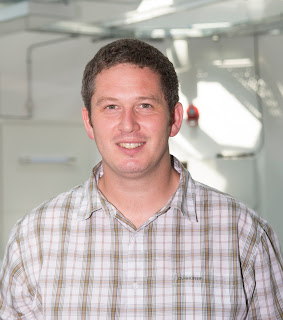How to get the most out of veterinary work experience
A-level student Miles Huglin tells us about his week of veterinary work experience here with us at the University of Liverpool.
Anyone hoping to get anywhere in the veterinary world needs
work placements. Sites for animal care vary massively, from vet practices to slaughter
houses, and to ensure you’re up for the job, it’s necessary to visit as many of
these as possible. That’s why teachers,
parents and lecturers stress the importance of work experience so much to
students from such a young age – the sooner you start, the better it looks on
your CV. But what does that mean?
No matter how impressive it might be on paper,
absent-mindedly staring in the direction of a bunch of adults doing their jobs
isn’t gaining experience; it’s wasting it. And as an A level student myself, I
know many of us are guilty of this. A week at University of Liverpool's
School of Veterinary Science and
Institute of Infection and Global Health, however, has
taught me how much more valuable these opportunities can be, and how to make
the most of every second you get; it’s not only about building your CV, it’s about learning
how the network behind veterinary medicine works, and how you can be a part of
it.
Taking your pet to the vet, you meet a receptionist and a practitioner. Volunteering there, you meet the nurses and students, clean out the cages and
think you’ve seen it all. But where do those blood samples go? Where do the
results come from? How have the surgical and medical procedures you watch been
developed? These are easy questions to overlook while making tea and glancing
at the clock every minute until lunch, but why not ask?
While working at my local vet in Hatfield, I saw animal
samples being taken sent off and witnessed decisions being made based on the test
results that came back. It never once occurred to me that somewhere in the
country it was someone’s job to sift through the skin tags, blood and faeces to
obtain these vital data; Paul Gilmore,
of
Test-a-Pet diagnostics, talked me through how the company analyses samples,
ranging from tortoise toes from Birmingham to rabbit droppings from London.
While I was with him, a dog’s blood was being tested for Lyme disease, with the
owner of this animal somewhere else in the country having no idea where this
small sample of their beloved pet was; this simple fact was what made me realise just how much of this medical process goes on in the background.
Lyme disease, as I discovered, is caused by a type of
bacteria of the ‘borelia’ genus, closely related to the species which was being
studied by my next lecturer at Liverpool,
Dr Nick Evans (one of the single most
enthusiastic scientists I have ever met). This researcher was investigating
Bovine Digital Dermatitis – a problem affecting the back legs of cows and sheep
which lowers their milk yields and fertility. Having identified the bacterium
he believed to be the cause, Nick was looking into how the disease is spread
(from calf hoof to calf hoof), and effective solutions: medications and drugs
are all potentially viable, but simply raising awareness seemed to him the most
important factor. He told me that many farmers clip their cows’ hooves to
prevent the spread without even disinfecting their clippers between cattle, and
90% of these tools were found to be contaminated with the treponema which
causes the disease! As with any disease investigation, however, a major hurdle
in this research was posed by the fundamental basis of proving that the bacterium
in question caused the disease, so that farmers would listen. It’s fascinating
to think that your pet’s infection was once a non-diagnosable enigma with no
known cause, until someone like Nick did something about it.
 |
| Dr Nick Evans |
With this thought I was brought to technicians Catherine Hartley and Jenna
Dawson, who were growing cow hoof tissue in culture and planning on introducing
Nick’s treponemal bacteria to analyse the results. To prove his hypothesis,
they hoped to observe a pathogenic response from the bacteria, and if this
occurred then the testing could be progressed to cows themselves; the closer to
the animals you do your research, the more conclusive the results tend to be,
but the team wanted an indication of the likelihood of positive results before
they moved to live cattle trials.
 |
| In the lab |
I was astounded. All this work was to make a tiny bit of
progress in the understanding of one disease, but with scientists around the
country investigating and developing cures for so many others we are gaining a
better understanding of a huge number of the diseases affecting our animals
every year; I was only catching a tiny glimpse of this in the hours I spent
learning about this one cattle disease.
Much of this might be difficult to relate to, but what stands
out is clear: opportunities in the veterinary world are endless. With a rapidly
growing human population to feed and so many diseases like Ebola and Avian Flu
being identified as zoonotic (spreading from animals to humans), research into
our animals’ diseases is more important than ever. And why stop there? A degree
in veterinary medicine not only lends itself to a practical career, but also to
one in scientific research and experimentation.
At a university like Liverpool, the diseases facing us today are being fought
by scientists, doctors and vets working hand in hand.
I went to Liverpool hoping to see veterinary students at work,
and left with my eyes opened to all the possibilities that follow; sitting
back, watching surgeries and keeping questions to myself simply wasn’t an
option, and I can’t keep the experience to myself. The network of scientific
minds behind every prescription, every operation and every routine practised by
vets around the country is much more extensive than we can ever comprehend.
So, given the opportunity to scratch the surface of such a
limitlessly fascinating scientific world, why bother doing veterinary work
experience if all you’re learning to do is make the perfect cup of tea?
 Miles Huglin is an A-level student from Hertfordshire who spent a week at the University of Liverpool on a work experience placement earlier this year. For more information about work experience opportunities at the University please visit www.liv.ac.uk/working/jobvacancies/workexperience
Miles Huglin is an A-level student from Hertfordshire who spent a week at the University of Liverpool on a work experience placement earlier this year. For more information about work experience opportunities at the University please visit www.liv.ac.uk/working/jobvacancies/workexperience











